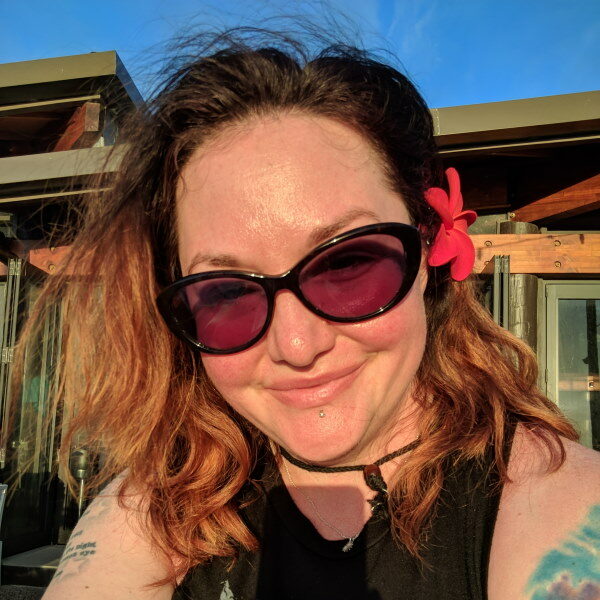breaking it down: how I keep things stupidly simple
I have a confession to make: I get easily overwhelmed.
If you haven’t met me, hi my name is Angie and this is awkward.
If you know me, you’re probably looking at your computer a little like this:

Especially since hi, I specialize in really complex marketing plans involving multiple channels of communication, upwards of half a dozen different audiences, and 200+ page documents full of JUST email sequences.
Like, when someone says “campaign” or “launch”, do you have a mental checklist of all the deliverables?
(Just me? I’m the weird one? OK then.)
I remember my first campaign. I’d just signed on to my first full-time corporate copywriter role – the first the company had ever hired in 80 years to that point. And I was coming onboard just as they were starting to plan what “spring” would look like in their chain of 80+ retail stores.
You know, signs, slogans, commercials, emails, website design refresh, catalogs… a full CAMPAIGN that would last for months.
And in my very first creative team meeting, the Creative Director (CD) looks at me and says… “all great concepts start with copy. What do you have?”
Deer-in-headlights Angie: “uhh… since I’m the newest person on the team I kinda figured I’d be watching how the team does it this time around?”
CD: “c’mon, dive right in. What do you have?”
Me, not even knowing yet what a “campaign” means: “umm… spring. Green? Life. Beginning? New? Plants, definitely…”
And I ramble-ranted my way through until we had a few semi-solid ideas, which I took home to noodle. And by noodle, I mean obsessively write about 10 pages and cut it down into 1 page explaining my concept.
The next day I nervously trudged to the follow-up creative team meeting, convinced this was the day they found out I was a fraud. I still had a million ideas running through my head, all of which were DEFINITELY better than the one I was holding in my hand on that one-pager.
The moment of truth arrived – I made my pitch, explained the concept. It turns out I’d landed on a combination of words that I thought represented spring (can’t remember what they were to this day, for the life of me).
Me: “so incidentally, I came up with three ‘B’ words – not THAT kind of B word… [insert words I can’t remember here], and to me they represent spring because…”
CD: “yes, the B word”
Me: “uhhh… what?”
CD (who was a very zen type and I adored him): “the B word. B. Bzzz.” He then pretended his pen was a bee buzzing around the room – hilarious for a ridiculously tall Nigerian man.
And that’s how my very first campaign, “Be Spring” (with a little bee icon in place of the word “be”) came to, well… be.
What does that have to do with complex campaigns and overwhelm?
That one decision was the “trigger” decision. Once it was made, we could check it off the list and shift our focus from concept development to execution. We had the language, the concept, the colors, the fonts. We knew how we wanted people to feel when they saw this work on signs in the stores, or when they heard our TV/radio ads.
Now we needed to translate that into to-dos. Spring catalog, 10 new in-store ads per week, 4 new radio ads per month, 6 new TV spots, YouTube tutorials, blog posts, 4 new emails per week, the weekly circular ad, social posts, etc…
From there we could evaluate what needed to happen first (catalog and in-store print signage – most resource intensive between photos and writing and design, plus a hard print deadline), what could be pushed back (developing email campaigns for later in the spring), and what could be tackled week by week.
From there, different pieces could go into different stages of development by different teammates – signs would go to designers because they didn’t have many words. Catalogs and commercials would come to me because they needed words to communicate the concept.
And that’s how in about 5 weeks, I produced (with the help of an amazing team) a full 4-month spring campaign despite not having experience in almost ANY of that stuff.
There’s an order to things when you’re working on something that big and complex. The key is being able to figure out the non-negotiable decisions that have to be made up-front, and what can be developed later on in the timeline.
Because no matter how hard you try, you’re never going to be able to create an entire campaign all at once. This is months of work to do a complicated omni-channel campaign, even for super experienced pros.
Decide what you want to communicate/what the overall message + goal is of this campaign is.
Figure out what assets you need to get that message out into the world (emails? TV commercials? Catalogs? Something else?).
Figure out which of those assets need to start work immediately/require more resources, and which can be batched out for later.
Get to work.
That’s how I learned to go from completely overwhelmed, deer-in-the-headlights wondering how the hell I was ever going to write a whole 4-month campaign… to actually doing it.
And now I use this same flow to help plan every campaign I work on:
What’s the big thing I’m communicating?
What’s the timeline?
Who am I talking to?
How am I contacting them? (what channel)
What one message do they need to take away from that contact?
Break it down, and before you know it you’ve got a whole campaign.

ANGIE COLEE
If you’re an aspiring freelancer who’s working up the courage to leave the day job… good news! I’m sharing all the things I WISH I’d known before making the leap so that hopefully your journey goes a little more smoothly than mine.
